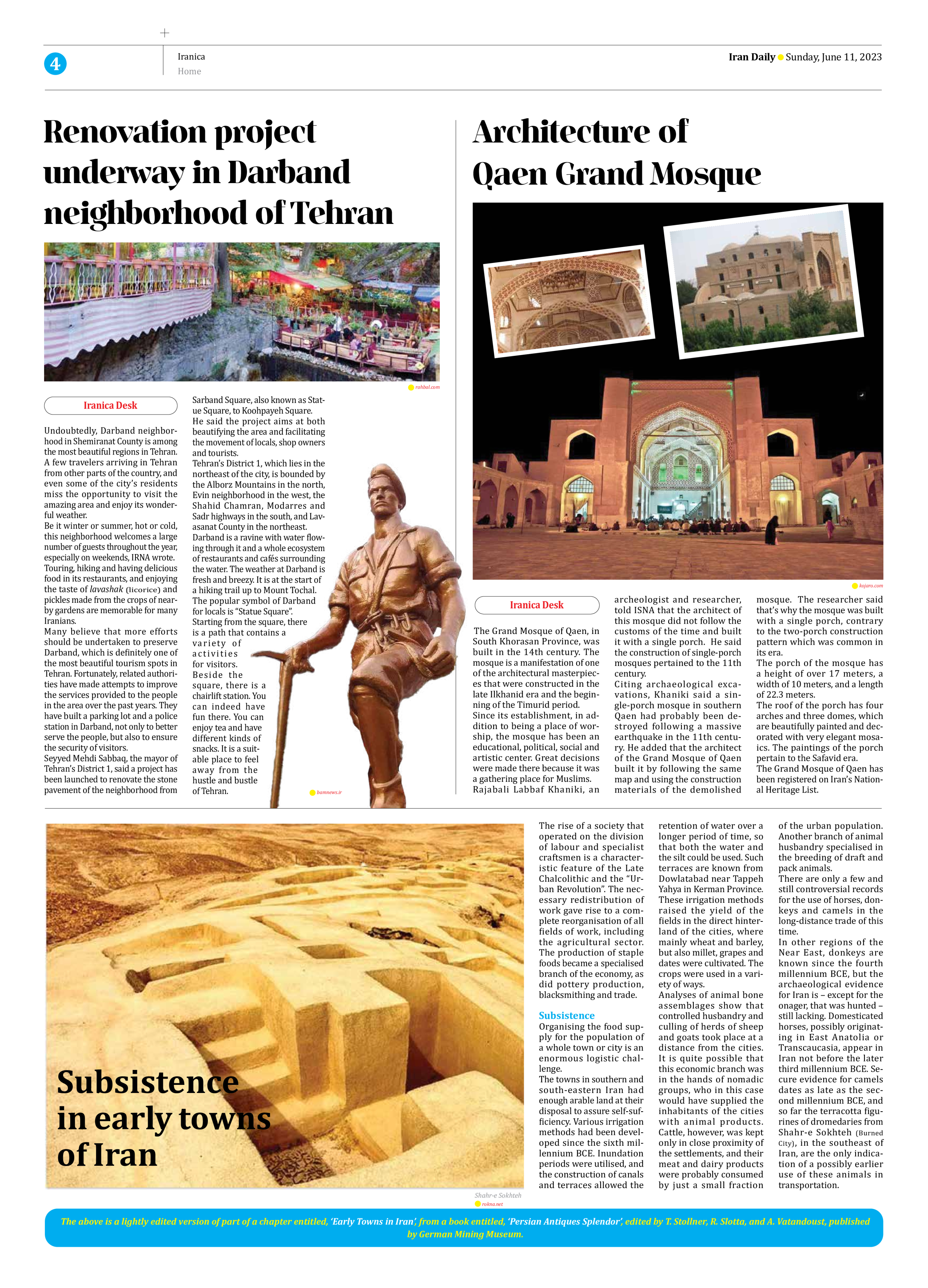
Subsistence in early towns of Iran
The rise of a society that operated on the division of labour and specialist craftsmen is a characteristic feature of the Late Chalcolithic and the “Urban Revolution”. The necessary redistribution of work gave rise to a complete reorganisation of all fields of work, including the agricultural sector. The production of staple foods became a specialised branch of the economy, as did pottery production, blacksmithing and trade.
Subsistence
Organising the food supply for the population of a whole town or city is an enormous logistic challenge.
The towns in southern and south-eastern Iran had enough arable land at their disposal to assure self-sufficiency. Various irrigation methods had been developed since the sixth millennium BCE. Inundation periods were utilised, and the construction of canals and terraces allowed the retention of water over a longer period of time, so that both the water and the silt could be used. Such terraces are known from Dowlatabad near Tappeh Yahya in Kerman Province.
These irrigation methods raised the yield of the fields in the direct hinterland of the cities, where mainly wheat and barley, but also millet, grapes and dates were cultivated. The crops were used in a variety of ways.
Analyses of animal bone assemblages show that controlled husbandry and culling of herds of sheep and goats took place at a distance from the cities. It is quite possible that this economic branch was in the hands of nomadic groups, who in this case would have supplied the inhabitants of the cities with animal products. Cattle, however, was kept only in close proximity of the settlements, and their meat and dairy products were probably consumed by just a small fraction of the urban population. Another branch of animal husbandry specialised in the breeding of draft and pack animals.
There are only a few and still controversial records for the use of horses, donkeys and camels in the long-distance trade of this time.
In other regions of the Near East, donkeys are known since the fourth millennium BCE, but the archaeological evidence for Iran is – except for the onager, that was hunted – still lacking. Domesticated horses, possibly originating in East Anatolia or Transcaucasia, appear in Iran not before the later third millennium BCE. Secure evidence for camels dates as late as the second millennium BCE, and so far the terracotta figurines of dromedaries from Shahr-e Sokhteh (Burned City), in the southeast of Iran, are the only indication of a possibly earlier use of these animals in transportation.
The above is a lightly edited version of part of a chapter entitled, ‘Early Towns in Iran’, from a book entitled, ‘Persian Antiques Splendor’, edited by T. Stollner, R. Slotta, and A. Vatandoust, published by German Mining Museum.







